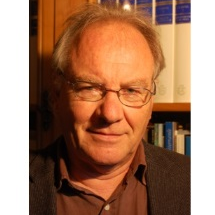Advanced Structures and Properties for Ceramic Materials
A special issue of Materials (ISSN 1996-1944). This special issue belongs to the section "Advanced and Functional Ceramics and Glasses".
Deadline for manuscript submissions: closed (20 September 2022) | Viewed by 3182
Special Issue Editors
Interests: infrared; dielectrics; multiferroics; superconductors; perovskites; energy; thin films
Special Issue Information
Dear Colleagues,
With high-Tc oxide superconductors, the colossal permittivity of dielectrics, and many other potential applications, advanced ceramic materials have earned their scientific nobility both in ancient times and in their daily use today. Solid state reaction for their elaboration has been complemented by sol–gel routes and, more recently, core–shell methods. The sintering of powders under controlled atmosphere and the characterization and the properties of grain boundaries and of the interface between the grain and the grain boundary remain challenging. Coating is suitable for certain applications. Nanostructuration is an open field. The development of methods of diffraction, imaging by transmission electron microscopy (HRTEM, HAADF STEM, etc.), scanning electron microscopy, and atomic force microscopy helps the characterization of structures and properties. Raman spectroscopy is also exploited. Lead-free piezoelectrics, ferroelectrics, multiferroics including their construction by coating of alternating ferromagnetic and ferroelectric thin films, and more generally dielectrics are defined for applications with positive potential. The energy transition raises pressing challenges for which advanced ceramic materials are on the frontline for energy efficiency, energy storage, high-performance capacitors, electrodes for solid fuel cells, and many other promising fields.
Prof. Dr. François Gervais
Dr. Cécile Autret-Lambert
Guest Editors
Manuscript Submission Information
Manuscripts should be submitted online at www.mdpi.com by registering and logging in to this website. Once you are registered, click here to go to the submission form. Manuscripts can be submitted until the deadline. All submissions that pass pre-check are peer-reviewed. Accepted papers will be published continuously in the journal (as soon as accepted) and will be listed together on the special issue website. Research articles, review articles as well as short communications are invited. For planned papers, a title and short abstract (about 100 words) can be sent to the Editorial Office for announcement on this website.
Submitted manuscripts should not have been published previously, nor be under consideration for publication elsewhere (except conference proceedings papers). All manuscripts are thoroughly refereed through a single-blind peer-review process. A guide for authors and other relevant information for submission of manuscripts is available on the Instructions for Authors page. Materials is an international peer-reviewed open access semimonthly journal published by MDPI.
Please visit the Instructions for Authors page before submitting a manuscript. The Article Processing Charge (APC) for publication in this open access journal is 2600 CHF (Swiss Francs). Submitted papers should be well formatted and use good English. Authors may use MDPI's English editing service prior to publication or during author revisions.
Keywords
- sol–gel
- core–shell
- sintering
- nanostructuration
- coating
- ferroelectrics
- multiferroics
- dielectrics
- colossal permittivity
- electroceramics







